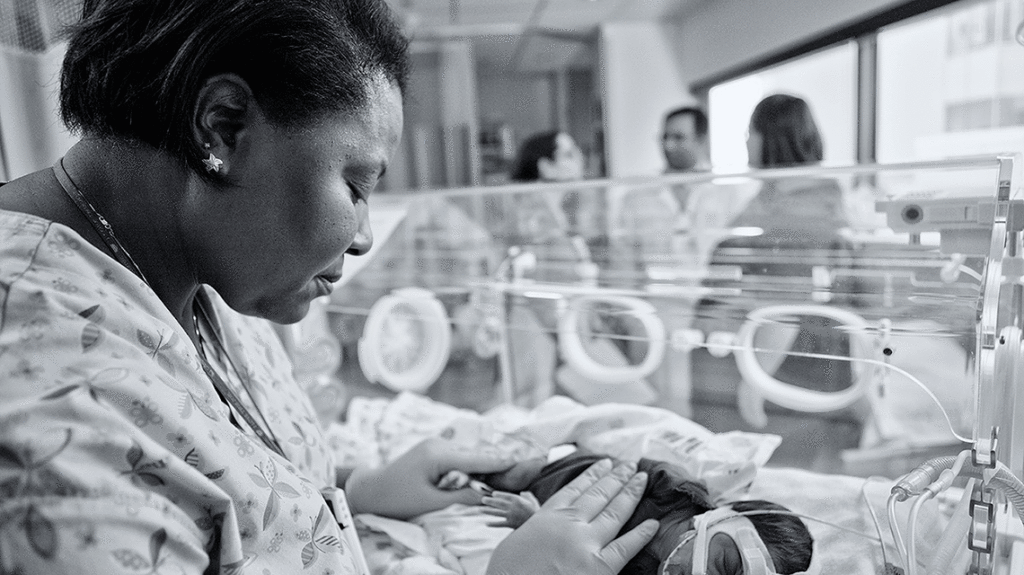Timing Steroids to Maximize Lung Benefit and Avoid Brain Harm in Premature Infants
Timing Steroids to Maximize Lung Benefit and Avoid Brain Harm in Premature Infants https://pediatricsnationwide.org/wp-content/uploads/2021/02/022812ds391HRBW_NICU-for-web-header-1024x575.gif 1024 575 Mary Bates, PhD Mary Bates, PhD https://secure.gravatar.com/avatar/c6233ca2b7754ab7c4c820e14eb518c8?s=96&d=mm&r=g- February 20, 2020
- Mary Bates, PhD

Treating infants early may decrease risk of lung disease with no added risk of neurodevelopmental impairment.
Steroids are used to treat extremely premature babies with respiratory failure, yet they can be associated with delays in brain development. A recent study looked at the age of first steroid administration and the risks of lung disease and neurodevelopmental impairment in preterm infants. The researchers hope their findings will help determine the optimal use of steroids for improving long-term lung function and neurodevelopmental outcomes.
Premature babies are at risk for developing bronchopulmonary dysplasia (BPD), a form of chronic lung disease. Steroids are sometimes used to prevent BPD in premature babies, but the treatment is associated with a higher risk of poor neurodevelopment. To complicate matters, BPD itself is a risk factor for neurodevelopmental impairment.
Researchers at National Institute of Child Health and Human Development (NICHD) Neonatal Research Network sites, including Nationwide Children’s Hospital, conducted a study to determine the optimal timing of steroid administration: one that would maximize lung benefit without increasing neurodevelopmental risk. The researchers analyzed outcomes of premature infants who received steroids between 8 days and 36 weeks old.
“We found that babies who received steroids between 8 days and 49 days after they were born had similar rates of BPD,” says Jonathan Slaughter, MD, MPH, a neonatologist and principal investigator in the Center for Perinatal Research within The Research Institute at Nationwide Children’s and an author on the study.
“But if the infants received steroids after day 50, they had a higher risk of BPD.”
Additionally, Dr. Slaughter and his colleagues found that the risk for neurodevelopmental harm was similar throughout the time periods studied; it did not seem to depend on when the baby was treated with steroids.
The results suggest that for infants at very high risk for BPD, treatment with steroids should be considered prior to 50 days of age for the lowest associated odds of severe lung disease. While avoiding unnecessary steroid exposure for preterm infants is likely beneficial, it appears that there may be pulmonary advantages to treating ventilated infants at the highest risk for long-term lung disease, and no added neurodevelopmental risks, when treatment occurs before they are 50 days old.
Future studies are still needed to determine the optimal type, dose, and timing of steroids to safely prevent BPD. The NICHD Network behind this study is also trialing hydrocortisone (as opposed to the more traditionally used dexamethasone) to prevent BPD without hurting brain development.
“We can’t say one hundred percent that treating early with steroids is beneficial, but we can say that treating early might be beneficial and it does not appear to be more harmful to the brain compared to delayed treatment,” says Dr. Slaughter, who is also an assistant professor of pediatrics at The Ohio State University.
“If you are thinking of treating a premature baby with steroids to improve their severe lung disease, it may be best to treat them early – they might have a lung benefit and when compared to waiting until their lung disease is more fully developed, it does not seem to increase their risk of neurodevelopmental delay.”
Reference:
Harmon HM, Jensen EA, Tan S, et al. Timing of postnatal steroids for bronchopulmonary dysplasia: association with pulmonary and neurodevelopmental outcomes. Journal of Perinatology. 2020 Feb 4. [Epub ahead of print]. doi:10.1038/s41372-020-0594-4.
Photo credit: Nationwide Children’s
About the author
Mary a freelance science writer and blogger based in Boston. Her favorite topics include biology, psychology, neuroscience, ecology, and animal behavior. She has a BA in Biology-Psychology with a minor in English from Skidmore College in Saratoga Springs, NY, and a PhD from Brown University, where she researched bat echolocation and bullfrog chorusing.
-
Mary Bates, PhDhttps://pediatricsnationwide.org/author/mary-bates-phd/December 27, 2016
-
Mary Bates, PhDhttps://pediatricsnationwide.org/author/mary-bates-phd/
-
Mary Bates, PhDhttps://pediatricsnationwide.org/author/mary-bates-phd/
-
Mary Bates, PhDhttps://pediatricsnationwide.org/author/mary-bates-phd/
- Post Tags:
- BPD
- Neonatology
- prematurity
- Posted In:
- In Brief






